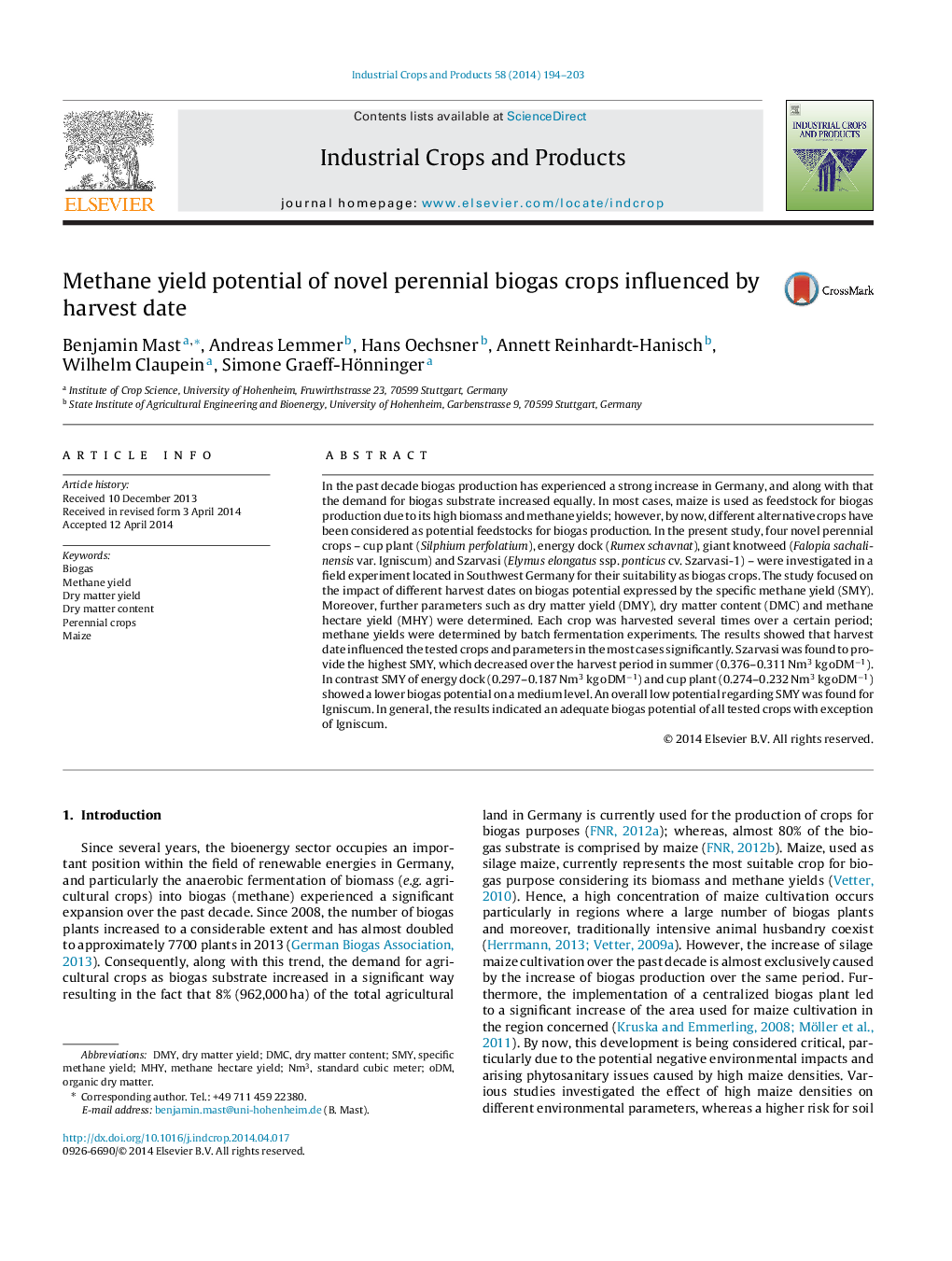| Article ID | Journal | Published Year | Pages | File Type |
|---|---|---|---|---|
| 6376750 | Industrial Crops and Products | 2014 | 10 Pages |
Abstract
In the past decade biogas production has experienced a strong increase in Germany, and along with that the demand for biogas substrate increased equally. In most cases, maize is used as feedstock for biogas production due to its high biomass and methane yields; however, by now, different alternative crops have been considered as potential feedstocks for biogas production. In the present study, four novel perennial crops - cup plant (Silphium perfolatium), energy dock (Rumex schavnat), giant knotweed (Falopia sachalinensis var. Igniscum) and Szarvasi (Elymus elongatus ssp. ponticus cv. Szarvasi-1) - were investigated in a field experiment located in Southwest Germany for their suitability as biogas crops. The study focused on the impact of different harvest dates on biogas potential expressed by the specific methane yield (SMY). Moreover, further parameters such as dry matter yield (DMY), dry matter content (DMC) and methane hectare yield (MHY) were determined. Each crop was harvested several times over a certain period; methane yields were determined by batch fermentation experiments. The results showed that harvest date influenced the tested crops and parameters in the most cases significantly. Szarvasi was found to provide the highest SMY, which decreased over the harvest period in summer (0.376-0.311 Nm3 kg oDMâ1). In contrast SMY of energy dock (0.297-0.187 Nm3 kg oDMâ1) and cup plant (0.274-0.232 Nm3 kg oDMâ1) showed a lower biogas potential on a medium level. An overall low potential regarding SMY was found for Igniscum. In general, the results indicated an adequate biogas potential of all tested crops with exception of Igniscum.
Keywords
Related Topics
Life Sciences
Agricultural and Biological Sciences
Agronomy and Crop Science
Authors
Benjamin Mast, Andreas Lemmer, Hans Oechsner, Annett Reinhardt-Hanisch, Wilhelm Claupein, Simone Graeff-Hönninger,
